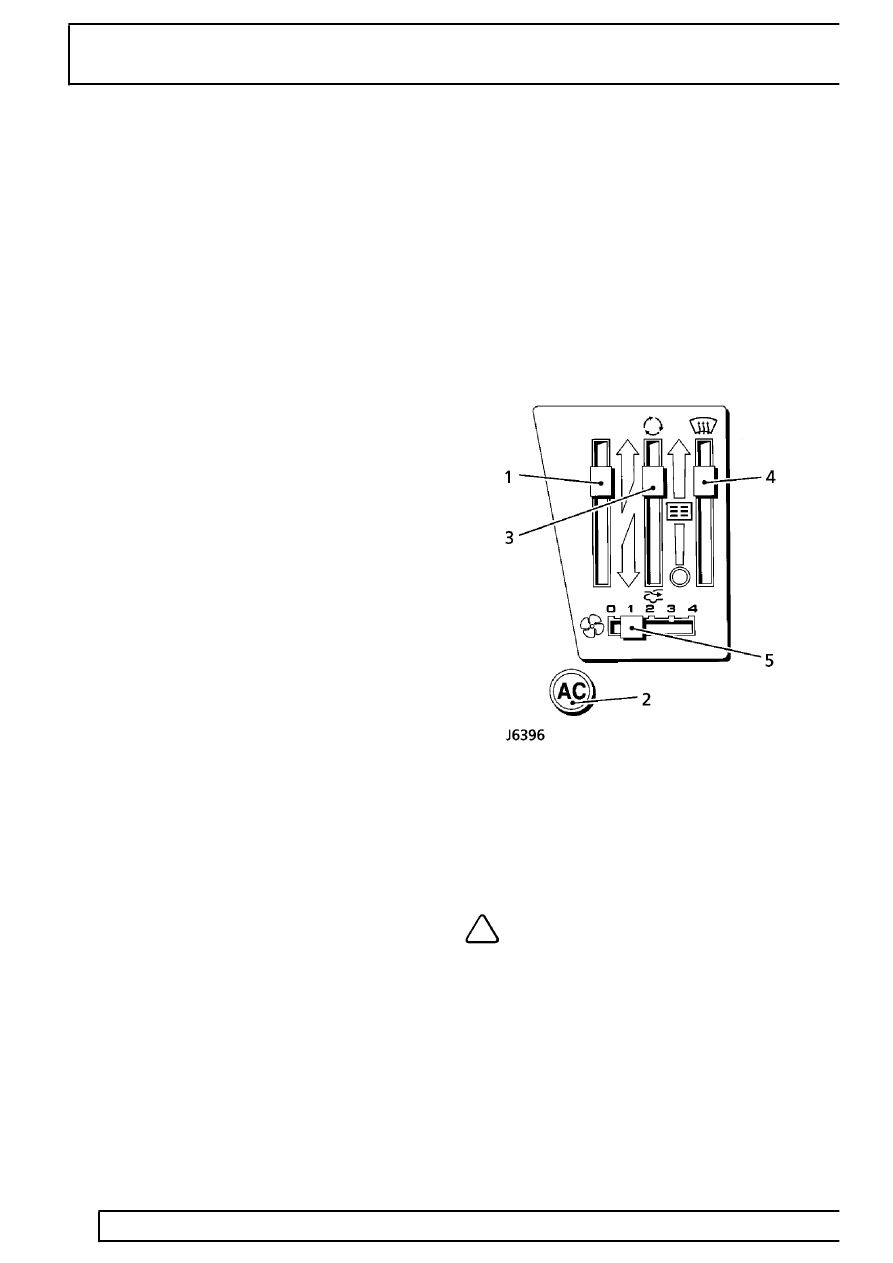300Tdi Defender

82
AIR CONDITIONING
2
DESCRIPTION AND OPERATION
Operation
Evaporator unit and expansion valve
High pressure liquid refrigerant is delivered to the
expansion valve which is the controlling device for the
air conditioning system. A severe pressure drop
occurs across the valve and as the refrigerant flows
through the evaporator it picks up heat from the
ambient air, boils and vaporizes. As this change of
state occurs, a large amount of latent heat is
absorbed. The evaporator is therefore cooled and as
a result heat is extracted from the air flowing across
the evaporator. The refrigerant leaves the evaporator,
on its way to the compressor, as a low pressure gas.
An evaporator sensor measures the air temperature at
the evaporator and engages or disengages the
compressor clutch to prevent icing of the air ways.
Compressor
The compressor, a pump specially designed to raise
the pressure of the refrigerant, is mounted on the front
of the engine and is driven by an independent drive
belt from the crankshaft pulley. The compressor draws
vaporized refrigerant from the evaporator. It is
compressed with a resulting rise in temperature and
passed on to the condenser as a hot, high pressure
vapour.
Condenser
The condenser is mounted directly in front of the
radiator and consists of a refrigerant coil mounted in a
series of thin cooling fins to provide the maximum
heat transfer. Air flow across the condenser is induced
by vehicle movement and assisted by two electric fans
attached to the frame of the condenser. The
refrigerant high pressure vapour enters the condenser
inlet on the RH side. As the vapour passes through
the condenser coils the air flow, assisted by the two
fans, carries the latent heat away from the condenser.
This induces a change of state resulting in the
refrigerant condensing into a high pressure warm
liquid. From the condenser, the refrigerant continues
to the receiver/ drier.
Receiver/drier
This component acts as a reservoir and is used to
hold extra refrigerant until it is needed by the
evaporator. The drier within the receiver unit contains
a filter and dessicant (drying material) which absorb
moisture and prevent dessicant dust from being
carried with the refrigerant into the system.
AIR CONDITIONING AND HEATER CONTROLS -
LH DRIVE
1. Temperature control
Move the lever upwards (RED) to increase air
temperature, or downwards (BLUE) to reduce air
temperature.
2. Air conditioning switch
Press the switch (indicator lamp illuminates) to
activate the air conditioning. Press again to switch off.
3. Air recirculation control
Move the lever fully upwards to activate air
recirculation. Move the lever fully downwards to
cancel recirculation.
NOTE: Prolonged recirculation may cause
the windows to mist up.
4. Air distribution control
Lever fully up - air to windscreen vents (also provides
some air to the footwell).
Lever midway - air to fascia vents (also provides some
air to the footwell).
Lever fully down - air to footwell vents (also provides
some air to the windscreen).
